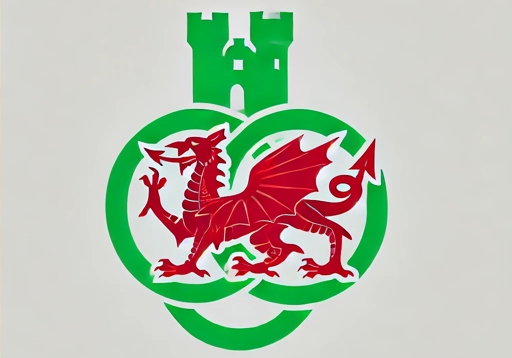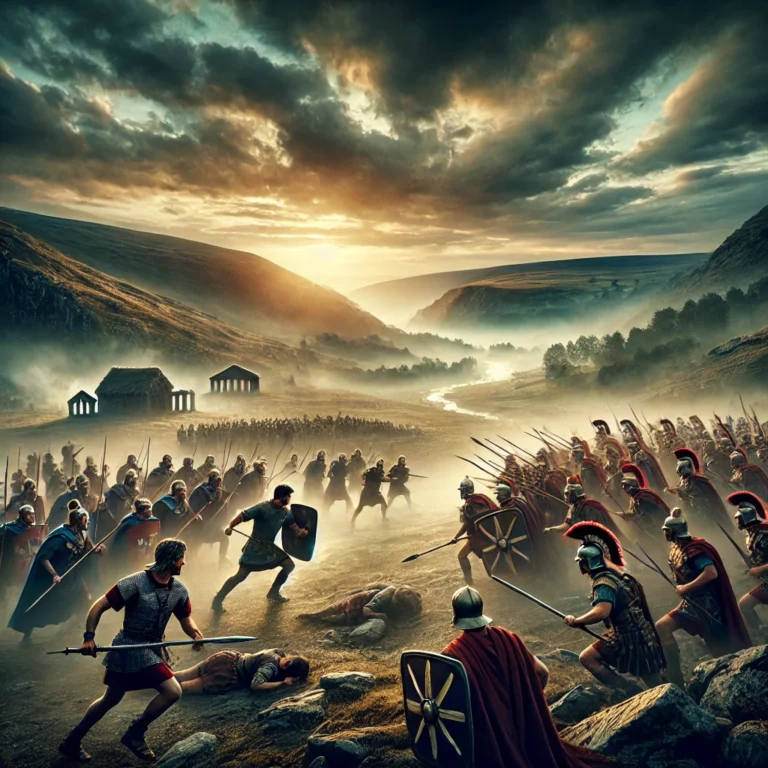Caradog and the Romans – the tale of a legendary Welsh hero standing against the might of an empire. His fierce resistance symbolised Welsh resilience and defiance against a vast foreign power. In this article, we delve into Caradog’s life, his tactical warfare, the legacy he left behind, and how his story continues to inspire the Welsh spirit of independence. Through his struggle, we gain insights into the enduring Welsh identity and the timeless fight for autonomy.
The Rise of Caradog in the Struggle Against the Romans
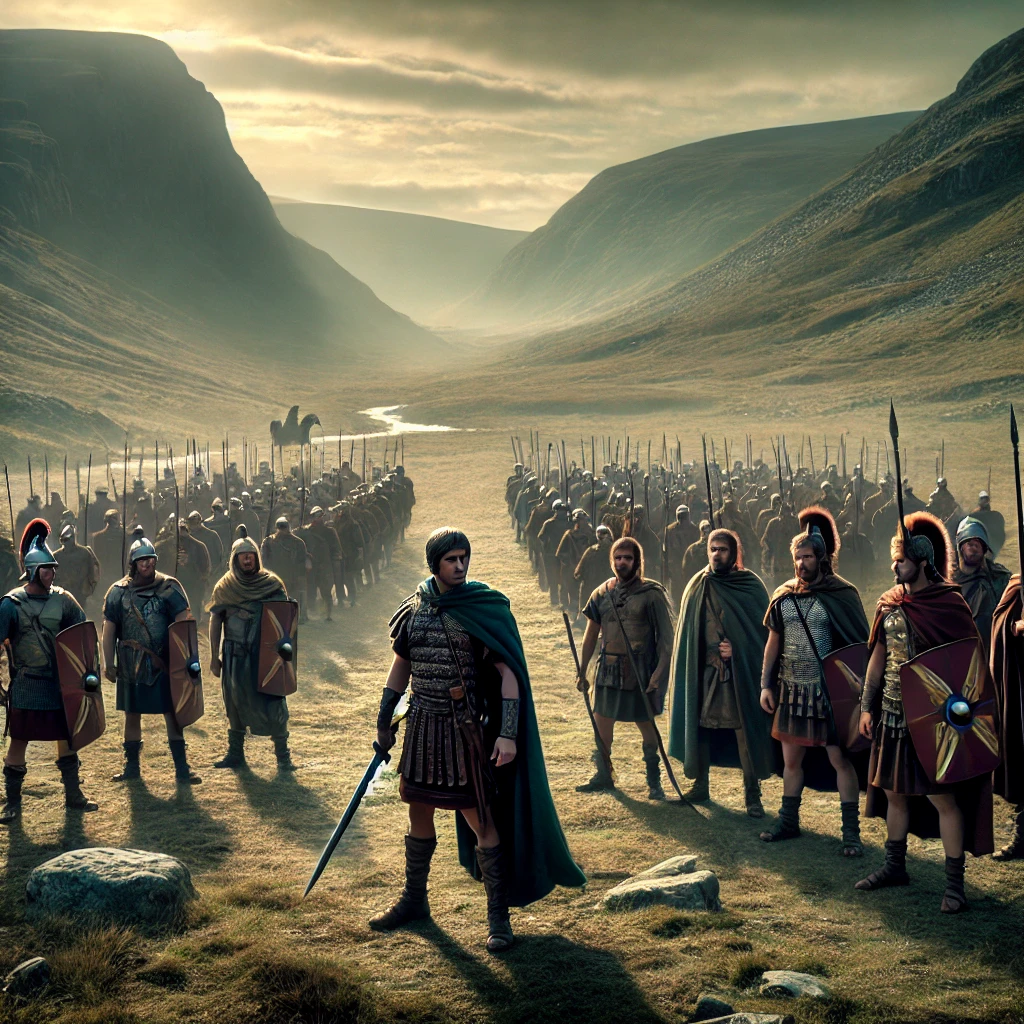
Caradog, known to the Romans as Caractacus, was a chieftain of the Catuvellauni tribe, based in what is now Wales. With his homeland rich in resources and strategically significant, Caradog soon became a central figure in resisting Roman domination, rallying tribes to stand united against the foreign empire. he was a key figure in Ancient Wales.
Caradog’s Early Life and Leadership Amidst the Roman Threat
Little is known about Caradog’s early life, but his leadership qualities were evident as he united multiple tribes in their resistance. His charismatic authority and deep understanding of his people’s needs enabled him to forge alliances with neighbouring tribes that traditionally held rivalries. Caradog embodied the vision of a unified resistance, showing that even in the face of an enormous empire, the Welsh spirit of independence could endure. His legacy as a central unifier lives on in the Welsh collective memory as a symbol of resilience and unity.
Caradog and the Romans: Battle Tactics and Strategies
Caradog and the Romans faced each other on a battlefield of tactics and strategy. As a master of guerrilla warfare, Caradog used the natural landscape to his advantage, offsetting the Romans’ superior numbers and technology.
The Roman Desire for Welsh Territory
Archaeological studies show that the Romans had extensive mining operations in Wales, particularly for gold and copper, which were essential resources for the empire’s wealth and military campaigns. – Source: British Museum, Roman Britain Exhibit.
The Roman Empire was drawn to Wales not just for its strategic location but for its natural resources, including metals like gold and copper. For the Romans, controlling Wales meant securing these valuable assets, enhancing their military supply chains, and asserting complete dominance over the British Isles. This background sets the stage for Caradog’s resistance, as he became one of the most formidable leaders to oppose Rome’s ambition in Wales. The drive to protect his homeland’s wealth and autonomy motivated Caradog, giving rise to his unyielding defiance.
Utilising the Welsh Terrain to Resist the Romans
The rugged hills, dense forests, and narrow valleys of Wales provided Caradog with natural fortifications. His forces navigated these lands with agility and precision, conducting ambushes and disappearing before the Romans could mount a counterattack. This tactic frustrated the Roman legions, accustomed to open-field battles. Caradog’s use of the terrain not only showcased his strategic mind but also his commitment to protecting his homeland by using every advantage the landscape offered
Establishing Strongholds Against the Romans
Caradog established strongholds on hilltops and in secluded valleys, creating a network of defensible positions that would take the Romans significant time and resources to overcome. These locations were fortified with natural barriers and makeshift defences, serving as safe havens for his forces and as rallying points for his allies. Even after Caradog’s capture, many of these strongholds remained symbols of defiance, and their strategic use influenced Welsh fortification styles for generations
The Cultural Impact of Caradog and the Romans on Welsh Identity
The legacy of Caradog and the Romans transcended military conflict. Caradog became a symbol of cultural identity, resistance, and pride, embodying the Welsh spirit of independence.
Caradog as a Symbol of Welsh Independence
Caradog was more than a leader; he was a national icon. His resistance against Rome’s seemingly unstoppable force inspired generations of Welsh people. Over time, stories of his bravery became woven into Welsh culture, establishing him as a hero of enduring significance.
Influence of Caradog’s Defiance on Welsh Tradition
Caradog stands as a testament to the unyielding Welsh spirit. His resistance against Rome was not merely a battle of arms but a battle of ideals, where freedom and heritage were defended against all odds.” – Dr. Elinor Lloyd, Historian of Welsh Identity and Resistance.
Caradog’s resistance against Rome wasn’t just a military feat; it became a powerful narrative of resilience embedded within Welsh culture. By refusing to surrender, Caradog transformed into a living symbol of defiance. His story echoes through Welsh poetry, art, and folklore, creating a lasting image of a hero who stood up against overwhelming odds. This narrative of resilience has since shaped Welsh identity, representing a deep-seated commitment to independence and pride in their heritage. Caradog’s defiance continues to inspire modern Wales, reminding the Welsh of their ancestors’ strength and determination.
Caradog’s Capture and the Romans’ Response
Despite his valiant efforts, Caradog was eventually captured. However, his legacy only grew in stature, as even the Romans recognised his bravery.
The Trial of Caradog in Rome
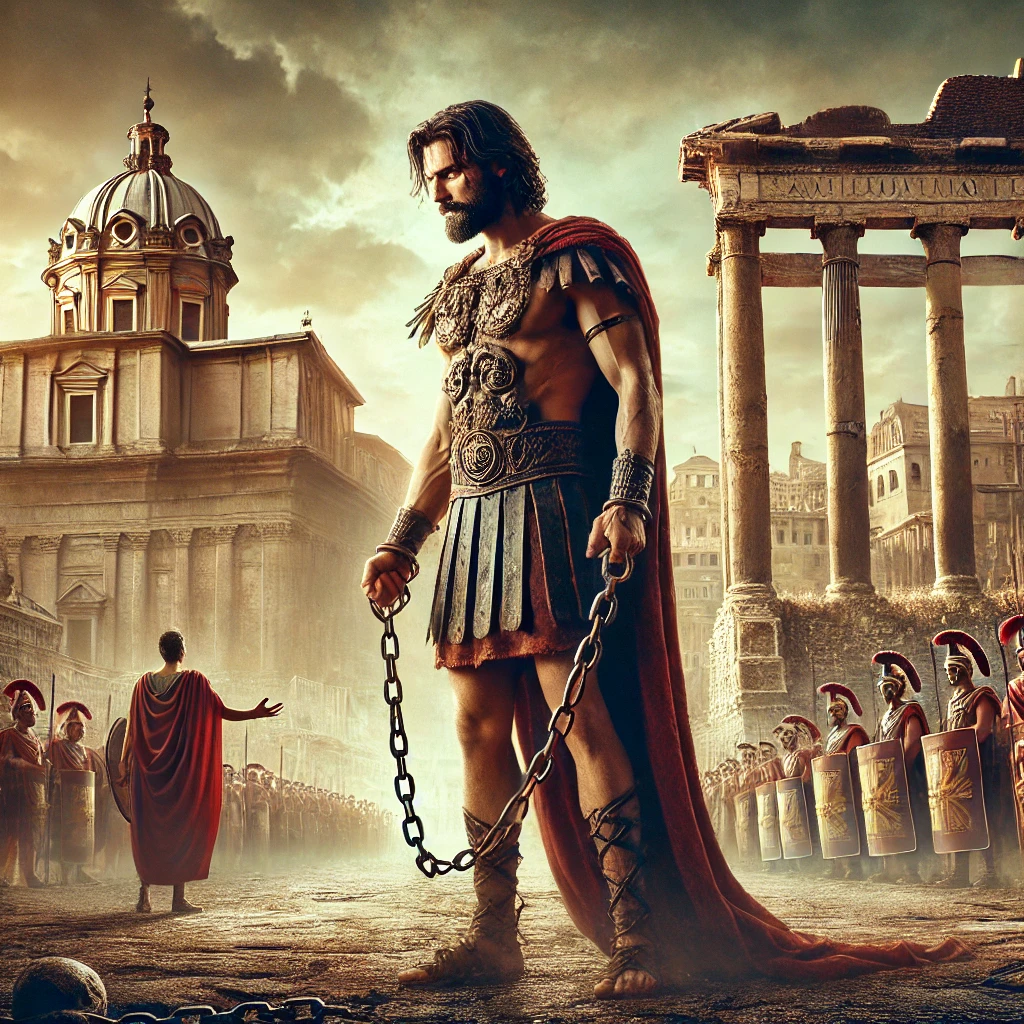
Caradog’s speech before Emperor Claudius, as recorded by Tacitus, conveyed his dignity and unbreakable spirit. Caradog declared, “Had my determination to preserve my kingdom been as feeble as my fortune, Rome would not have found me an enemy.” His eloquence reportedly impressed the emperor, leading to his unexpected clemency. – Source: Tacitus, The Annals of Imperial Rome.
Caradog was brought to Rome as a high-profile prisoner, yet his resolve remained unbroken. Standing before Emperor Claudius, Caradog delivered a speech that captured the attention of Roman citizens and dignitaries alike. His words, recorded by Roman historians, resonated as a proud declaration of his right to defend his people. Claudius, moved by Caradog’s dignity and unwavering courage, chose to spare his life, allowing him to live in Rome. This gesture not only marked Caradog as a respected adversary but also highlighted the Roman appreciation for valor, even among their enemies
Roman Perspectives on Caradog and His Defiance
To the Romans, Caradog was a respected adversary. Even Roman historians, typically dismissive of “barbarian” leaders, acknowledged his strength and resolve. Caradog’s dignified stance in captivity made him a figure of admiration, with his reputation spreading across the empire as an honoured foe.
A Comparative Look: Caradog and the Romans vs. Cadwallon
In the annals of Welsh history, Caradog’s name stands alongside other notable figures like Cadwallon. Both leaders resisted foreign invaders, representing the enduring Welsh spirit of independence.
Cadwallon’s Influence and the Legacy of Resistance
Caradog’s bravery against the Romans was more than a resistance; it became the blueprint for Welsh defiance. Generations of leaders, from Cadwallon to modern Welsh icons, trace their spirit of resistance back to Caradog.” – Prof. Rhys Edwards, Expert in Welsh Military History.
Like Caradog, Cadwallon led resistance efforts in Wales, embodying the same spirit of defiance. Together, their stories highlight a lineage of Welsh resilience and form an enduring narrative of national pride. For readers intrigued by Welsh heroes, Cadwallon’s story offers further insight into the rich tapestry of Welsh defiance.
you can check out my article on Cunedda Wledig to also read about another Welsh hero.
The Enduring Legacy of Caradog and the Romans in Modern Wales
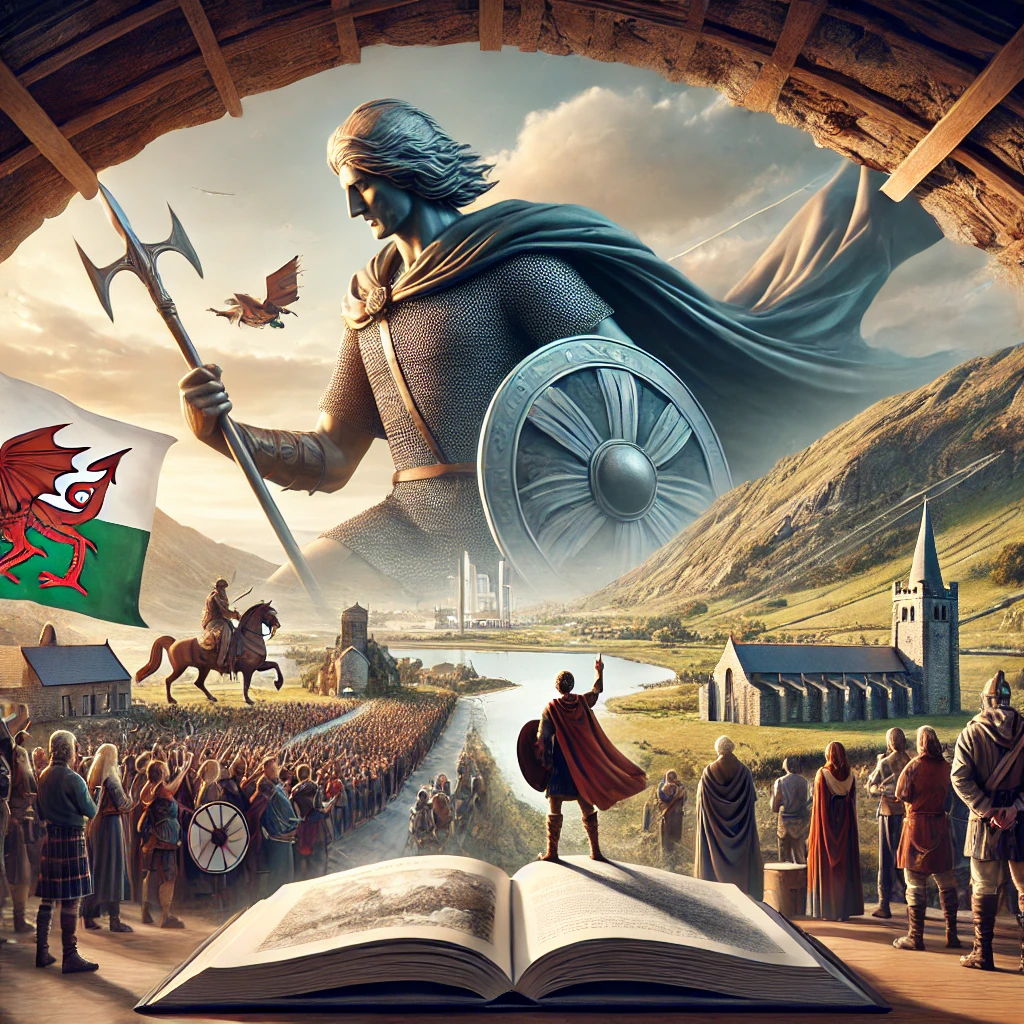
The story of Caradog and the Romans remains deeply embedded in Welsh culture, resonating with themes of resilience, pride, and unity.
Celebrations and Memorials of Caradog’s Legacy
Today, Caradog’s legacy is celebrated through literature, festivals, and monuments. Sites linked to his life attract visitors eager to learn about his resistance and the Roman impact on Wales. His story inspires those who value freedom and heritage.
Caradog’s Influence on Contemporary Welsh Culture
Caradog is not just a figure of the past; he lives in the Welsh soul. From schools to cultural festivals, his story is a reminder of what it means to stand for one’s identity and heritage.” – Sian Morgan, Cultural Anthropologist and Welsh Folklore Specialist.
Caradog’s tale is taught in schools, and his spirit is celebrated by Welsh artists and writers. His memory serves as a reminder of Welsh resilience, symbolising the enduring strength and identity of Wales in the face of adversity.
Key Takeaways:
- Caradog’s Defiance: Caradog symbolises the Welsh spirit of resistance, using guerrilla tactics and knowledge of the land to hold off the Romans.
- Cultural Icon: His story became a foundational narrative in Welsh identity, inspiring generations and fostering a strong sense of pride.
- Respected by Romans: Even in defeat, Caradog earned the respect of the Romans, leading to his eventual clemency and a place in history as an honourable enemy.
- Comparative Legacy: Caradog and figures like Cadwallon exemplify Welsh resistance, creating a lineage of heroes celebrated in Welsh culture.
- Modern Legacy: Caradog’s influence endures in Welsh culture, remembered through literature, monuments, and festivals.
Conclusion: The Legendary Caradog and His Lasting Impact on Wales
Caradog’s resistance against the Romans remains one of the most powerful stories of Welsh history. His courage and determination continue to serve as a symbol of Welsh identity, inspiring a sense of pride and independence. Caradog’s legacy, intertwined with other legendary figures like Cadwallon, reinforces the spirit of resilience that has defined Wales for centuries. His story endures, reminding modern Wales of the strength and tenacity of their ancestors.
Matt
